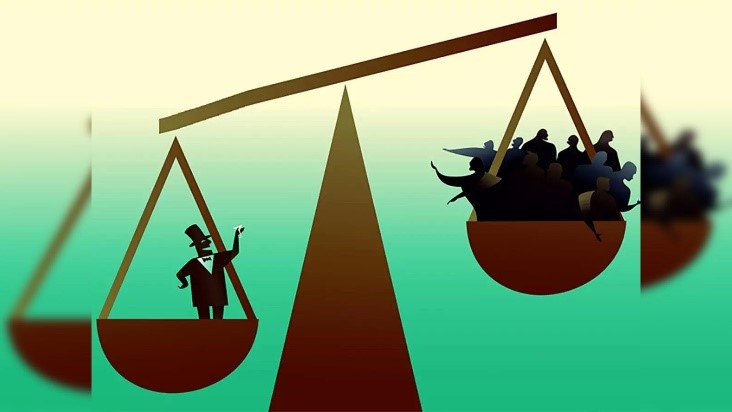Description

Disclaimer: Copyright infringement not intended.
Context
- In an interview with Lucas Chancel, co-director at the World Inequality Lab of the Paris School of Economics and lead editor of the “World Inequality Report 2022,” key insights were shared regarding the trajectory of inequality in democratic countries post-colonization, with a focus on India's policies and their impact on bridging inequality.
KEY INSIGHTS
Democratic Policies and Inequality Reduction
- Chancel highlighted the significant progress made by democratic countries emerging from colonization in addressing inequality, attributing it to interventions like economic regulation, high tax rates, and strategic economic management policies such as inheritance tax.
- India's adoption of similar policies post-colonization, including the implementation of five-year plans and high tax rates, aimed to bridge inequality and regulate the economy.
Shift in Economic Ideologies
- Post-1970s, there was a global shift in economic ideology, questioning the efficacy of high tax rates and regulations in wealth generation.
- Chancel emphasized that inequality does not inherently challenge democracy but rather underscores the importance of policy choices made within democratic frameworks.
Impact of Inequality on Democracy
- Inequality poses a threat to democracy, necessitating government intervention to rectify the trend.
- Chancel stressed the need for governments to address rising inequality to safeguard democratic principles.

Insights from "Income and Wealth Inequality in India, 1922-2023: The Rise of the Billionaire Raj"
- In collaboration with Thomas Piketty and Anmol Somanchi, Chancel released a working paper titled “Income and Wealth Inequality in India, 1922-2023: The Rise of the Billionaire Raj,” providing updated insights on inequality trends in India.
Historical Trends in Income Inequality
- From 1951 to the early 1980s, India witnessed a decline in income inequality, with the top 10% share of national income decreasing from 37% to 30%.
- However, post-1990s economic reforms, income concentration escalated, with the top 10% share soaring to 60% in recent years.
Factors Influencing Inequality
- The paper attributes the decline in inequality during India's initial decades to socialist policy agendas pursued by the government till the 1980s.
- Conversely, the onset of economic reforms in the 1980s, leading to liberalization in 1991, halted the decline in inequality and contributed to its subsequent rise.
Rise of Billionaires and Extreme Wealth Concentration
- The paper highlights a surge in the number of billionaires in India, from just one in 1991 to 162 in 2022, alongside a dramatic increase in their total net wealth share, reaching 25% of India’s net national income in 2022.
- This level of inequality mirrors pre-1922 observations during the British Raj, leading to the aptly titled paper, “Billionaire Raj.”
- Through these insights, the complex interplay between democratic policies, economic reforms, and their impact on inequality in India is elucidated, underscoring the imperative for inclusive growth strategies and equitable distribution of wealth.
READ: https://www.iasgyan.in/daily-current-affairs/world-inequality-lab-working-paper#:~:text=Extreme%20Levels%20of%20Inequality%20in,observed%20during%20the%20colonial%20period.
https://www.iasgyan.in/daily-current-affairs/inequality-in-india
|
PRACTICE QUESTION
Q. Examine the trends and causes of income and wealth inequality in India. Evaluate the impact of government policies and economic reforms on these disparities and suggest measures to promote inclusive growth.
|













